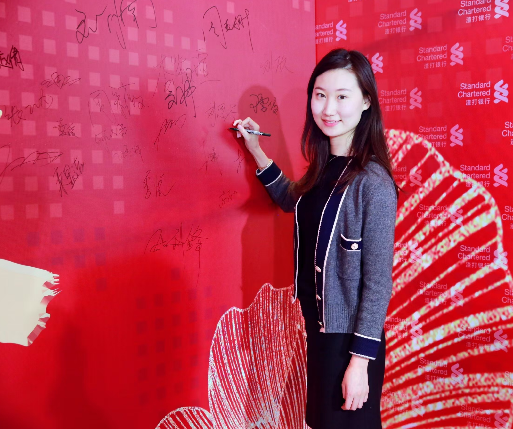Editor’s Note: As the number of undocumented children in the U.S. has increased in recent months, teachers have found themselves on the front lines of caring for these students and addressing their unique challenges. We turned to Amy Mazur, who trained future educators on this topic at The George Washington University, to tell us what teachers should know.
In the first eight months of 2014, nearly 60,000 school-aged children entered the United States, undocumented and unaccompanied by a family member. These recent immigrants are eligible to enroll in U.S. schools and to be given access to the same school-based resources as children born in this country.
 These resources require professionals who are skilled in teaching as well as other seemingly unrelated fields like nursing, nutrition, speech and language, occupational and physical therapy, psychology, psychiatry and social work, just to name a few. Individuals working from these disciplines have field-specific training and certification, yet all have to acquire new skills in order to understand how the background of their new students impact successful instruction.
These resources require professionals who are skilled in teaching as well as other seemingly unrelated fields like nursing, nutrition, speech and language, occupational and physical therapy, psychology, psychiatry and social work, just to name a few. Individuals working from these disciplines have field-specific training and certification, yet all have to acquire new skills in order to understand how the background of their new students impact successful instruction.
How can professionals facilitate school success for these undocumented students, and what do they need to know about them? I suggest they remember:
1. Just because a student may speak with an accent doesn’t mean they think with an accent.
Many know the academic content but do not have the English language skills to express their knowledge. It is important not to jump to conclusions about a student’s prior knowledge or aptitude based on their lack of English language-expressive or receptive language skills. Professionals must ask themselves how else they can assess student knowledge. What other ways can they bring new information to these students? I suggest dramatization, hands-on activities and movies, as well as shared learning experiences in which new students are paired with peers who speak their language and have access to the curriculum in both English and the student’s native language.
2. Often students have witnessed violence and experienced poverty prior to fleeing to the U.S.
They may have also faced abuse in the process of their journey to this country. Some, but not all, are struggling with post-traumatic stress disorder. Teachers cannot afford to ignore that each child is an individual who cannot be expected to leave their prior experiences at the schoolyard door. Students need to have their challenges and traumas acknowledged, and teachers must establish a trusting, accepting and safe atmosphere in order for these students to learn.
3. These students have left their family behind, traveling alone with the hopes of finding shelter with family friends or unknown relatives.
They may struggle to deal with the loss of their own family while attempting to become a part of a new family constellation that, although from their country of origin, may exhibit values, culture or language as well as daily expectations that are different than their own.
4. Learning occurs in the context of one’s experiences.
Professionals must build on what students bring to the learning environment rather than focusing on what they have not had the opportunity to learn. Many of these students have had little formal education or interrupted formal education experiences in their country of origin, yet they are anxious to learn both academic content as well as English language skills.
5. Undocumented students face the fact that immigration courts can decide that they may not remain in this country.
Until a decision regarding immigration status is made, these students live in limbo with a constant reminder that they are not a part of their past life, nor are they officially entitled to move on with their life as free citizens of this country. This creates additional stress, often making it difficult for students to focus on learning.
6. Acculturation is a process, not an event that can be earmarked by a specific date.
It takes time to learn the culture of a new family, community, school and country. Teachers cannot expect newcomers to discard all their beliefs and practices for the sake of those among whom they have been recently immersed. It takes time for a recent immigrant to understand these new cultures and to decide how to integrate their original values and expectations with new practices and beliefs. It is important to respect this process and to allow each individual to come to terms with their own practices in a non-judgmental environment.
Teachers who have the privilege of working with these newly-arrived students have the opportunity to witness the resilience they bring to the learning environment, even in the face of challenge. Acknowledge this resilience, for it is the fuel that propels them to take the next step forward as healthy and successful individuals who rejoice in learning.
Amy Mazur is a retired professor of Bilingual Special Education at The George Washington University, where she developed a course and film titled “The Immigrant Experience” and ran teacher training programs. She is co-chair of the special education special interest group for the National Association of Bilingual Education and co-author of the book Teaching Diverse Learners: Principles for Best Practice.
Popular News




Current News
Manufacturing

Collaboratively administrate empowered markets via plug-and-play networks. Dynamically procrastinate B2C users after installed base benefits. Dramatically visualize customer directed convergence without
Collaboratively administrate empowered markets via plug-and-play networks. Dynamically procrastinate B2C users after installed base benefits. Dramatically visualize customer directed convergence without revolutionary ROI.





About Us
Tech Photos
























